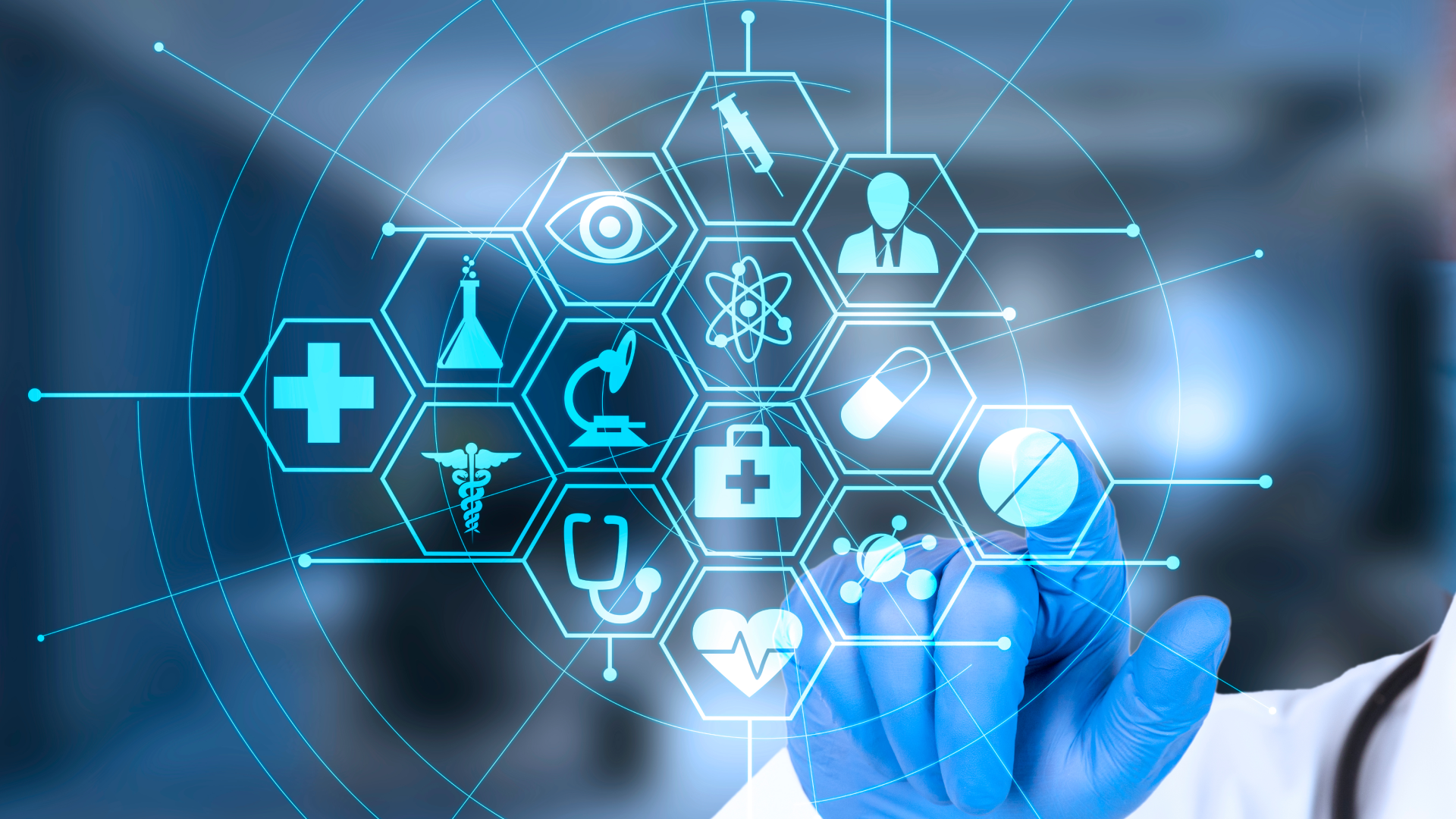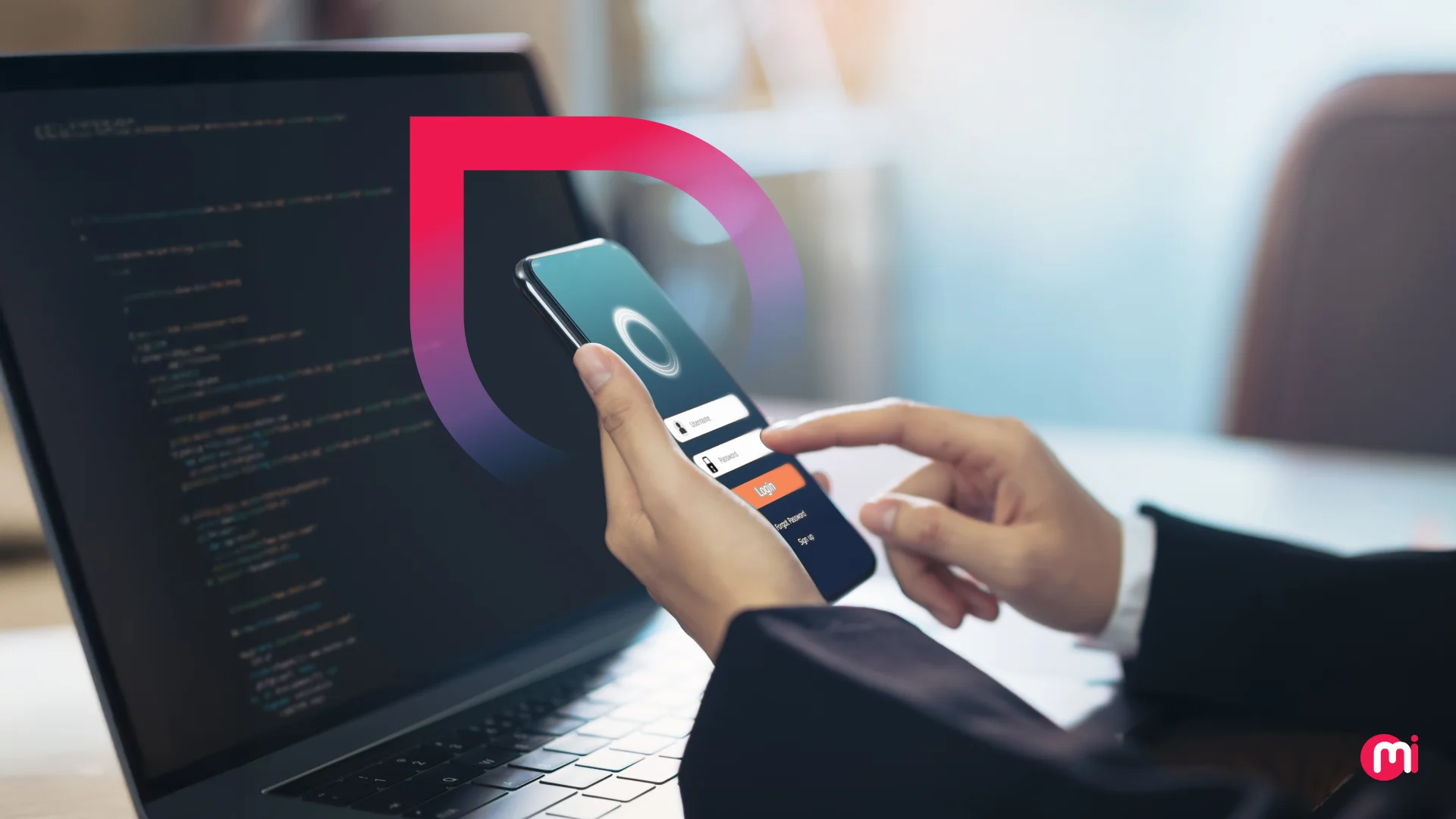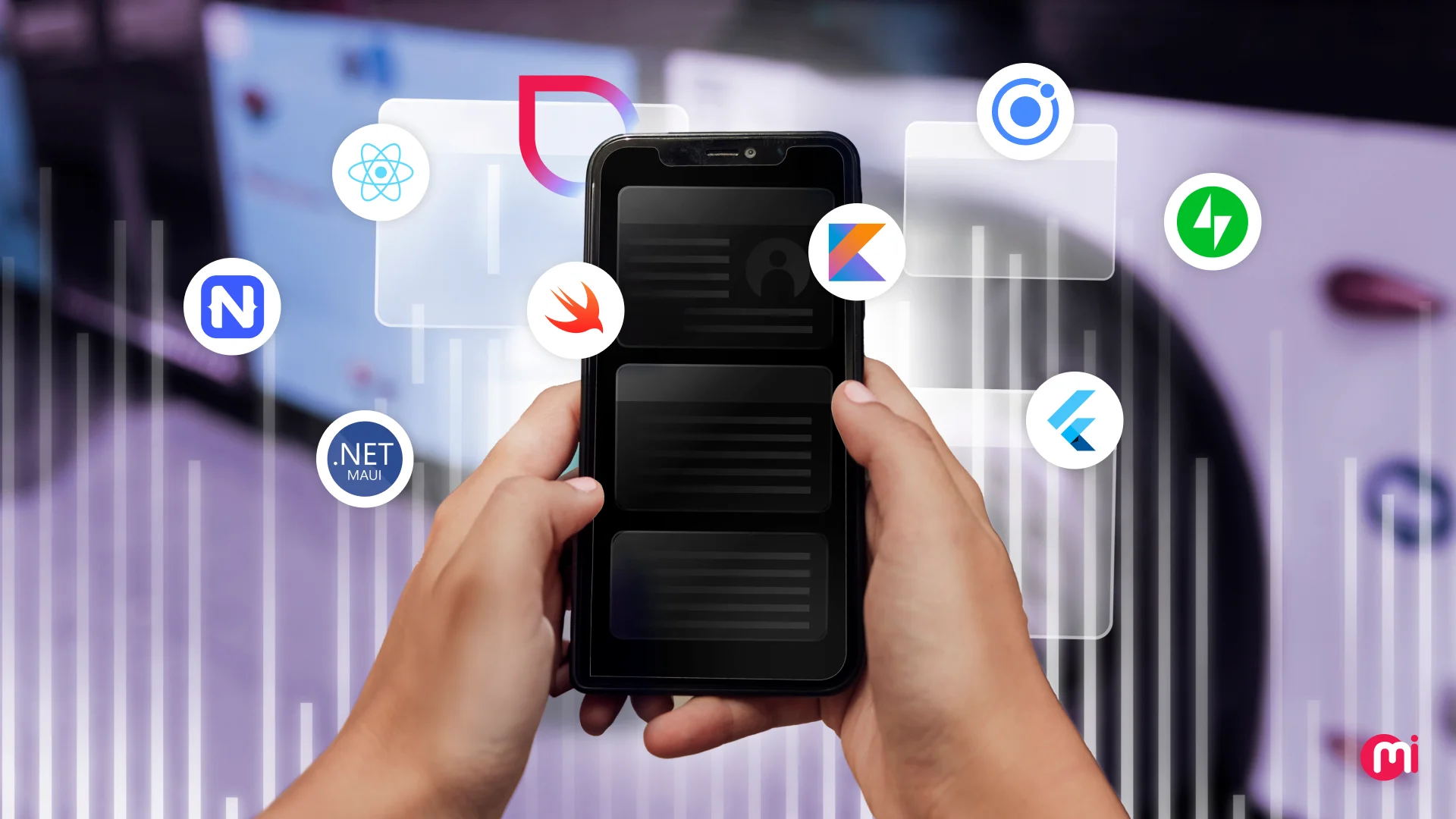Top Healthcare App Development Trends That Will Dominate in 2025
- Mobile
- December 17, 2023
Ever since the adoption of Smartphones and further mobile applications have flooded the market, global industries are on their way to offering their services through the adoption of mobile app development trends. Then why should the healthcare industry stay behind?
One of the prominent and visible growths has been in the healthcare industry, which has gone many miles ahead of where it stood a decade ago. All thanks to taking a step ahead in Healthcare app development, paving patients’ roadmap towards the gateway to easy access to healthcare prepositions.
However, that can’t be done with just a snap of a finger. You, as a healthcare organization entering into the mHealth service market, must follow healthcare app development trends, which we have discussed over here, to lead your app concept to success.
In addition, to know healthcare app development trends, the market study is the need of the hour!!
Healthcare App Development Market Analysis
According to a report, there are 350,000 mHealth applications hosted across different app stores. In addition, around 54,546 healthcare and medical apps are available on the Google Play Store, and 41,517 healthcare and medical apps are available on the Apple App Store, states Statista.
The report further states that all the 350,000 mHealth applications are divided into categories, including medical, fitness, and health apps. One is also aware that the market of the healthcare industry will continue to excel in the forthcoming years.
Here’s the reference for it: The mHealth market size was valued at USD 63.88 billion in 2022 and is expected to reach USD 243.57 billion by 2030 at a CAGR of 18.2% in the timeline of 2022-2030.
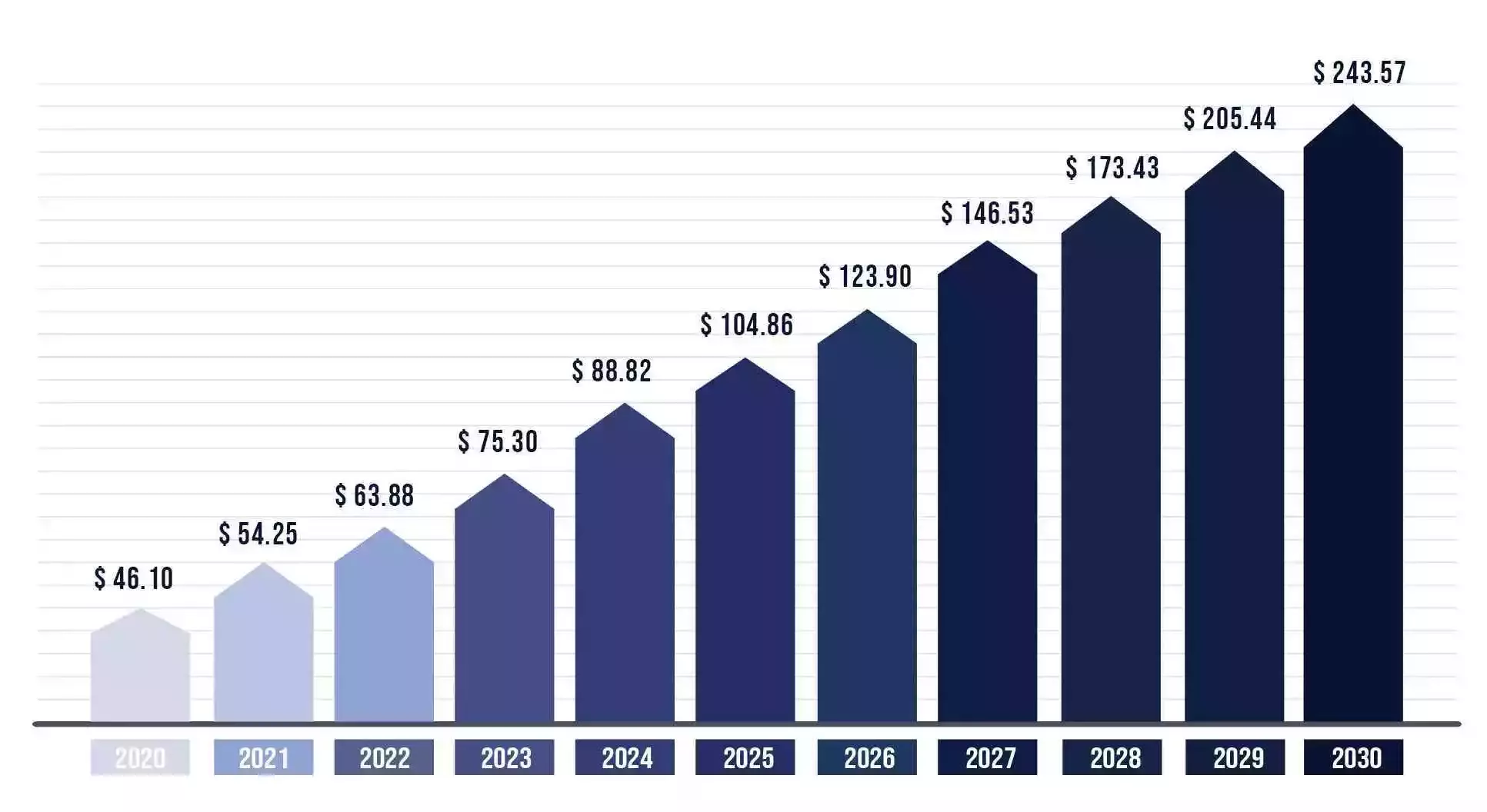
In fact, it can be firmly said that health apps have been playing a significant role in motivating people to live healthier and fit lives. As the latest report circulated by Statista, 86.3 million users are extensively relying on Health or Fitness apps to promote a rich lifestyle.
However, the peak of the COVID-19 pandemic has affected the healthcare industry extensively, which led to the rapid adoption of Healthcare software development solutions.
COVID-19 Impact on Healthcare IT Development Investment
- The Accenture survey conducted in the year 2021 resulted in around 1800 citizens of the United States (meaning 26% of the total participants of the survey) showing a positive response towards the improved access to healthcare services since the wake of the pandemic.
- The US market evaluation of the telemedicine application is expected to reach USD 25.88 Billion by 2027 at a CAGR of 15.8%.
- As of 2021, around 78% of office-based physicians and 96% of hospitals have adopted licensed EHR to ensure better critical patient record-keeping with easy access.
- In 2021, approximately 32% of patients consulted doctors with the adoption of the telemedicine app, which was about 7% in 2020. See the image added below to find the positive increment in healthcare app solutions across the globe.
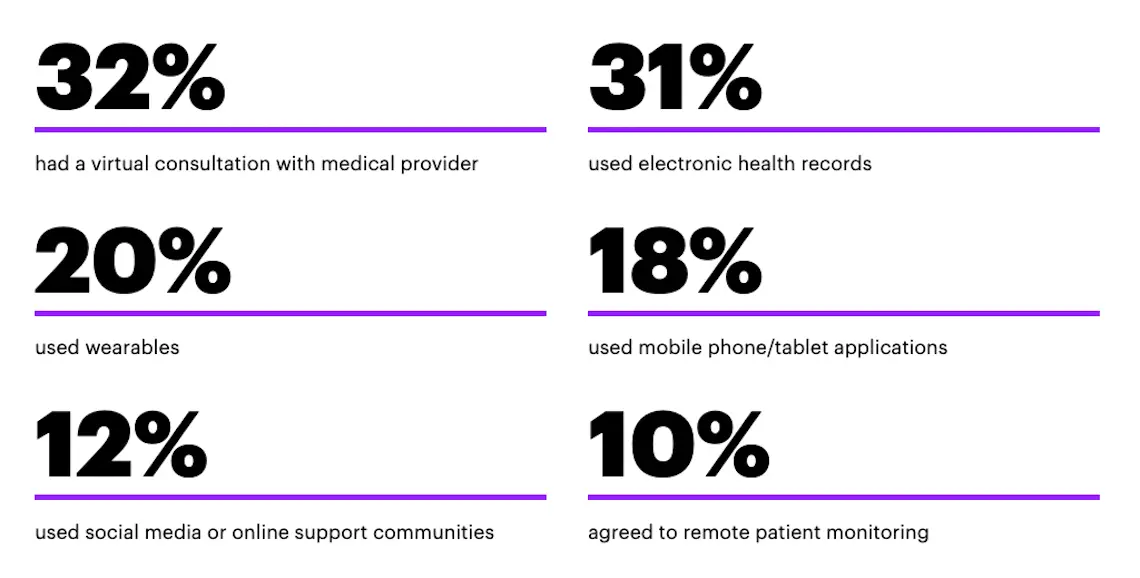
Knowing healthcare app adoption market statistics is just a first step, but you do want to know healthcare app development trends for 2025 to move forward.
Top Healthcare App Development Trends to Rule in 2025
Now, if these encouraging statistics have already inspired you and you are actually planning to develop a healthcare app, you must not only focus on implementing the latest features but also follow the healthcare trends to gain the top spot in the market.
1. Blockchain in Healthcare
Perhaps we have heard about Blockchain technology several times and have knowledge about its strong connection with cryptocurrency, specifically Bitcoin. However, the use and implementation of this advanced technology in the healthcare sector is something interesting to have curiosity about.
One of the major roles that Blockchain technology will be playing here is recording and preserving patient data with the highest data encryption level. It is considered to be quite a hectic task, which will become easier with its deployment.
In fact, one of the key reasons why most of the health apps have failed to get customer retention was that they did not provide a protective environment to safeguard data.
Blockchain technology fortifies your healthcare solution with a transparent, incorruptible, and decentralized log of medical records, which makes it an appropriate option for healthcare security applications.
As per the ResearchAndMarkets report, the global blockchain in the healthcare market is projected to hit USD 4.46 billion in 2026 at a CAGR of 38.1% during the forecast period of 2022-2026.
Popular healthcare apps built with blockchain technology include Akiri, BurstIQ, MEDICALCHAIN, Guardtime, etc.
2. Artificial Intelligence in Healthcare
Artificial Intelligence is the modern technology that has put many sectors precisely in the driver’s seat, including the healthcare industry.
As the healthcare technology landscape is moving towards becoming more intelligent, AI is expected to rock the industry with its proposals for pharmaceutical & biotechnology startups, natural language processing, robotic process automation, and clinical trial participant identifiers between the timeline of 2022-2028.
- Artificial Intelligence can help to examine patients more accurately and can be considered a huge blessing where immediate medical treatment is required.
- The advanced AI solutions will allow the computer systems to make self-decisions even in the unavailability of the medical staff.
- The patients will not be required to visit the clinics and hospitals regularly, which will definitely make medical bills more cost-effective.
- The Artificial Intelligence (AI) technique will also reduce the number of human errors. Yes, even doctors, at times, may make a mistake while diagnosing a patient or during treatment.
- AI will make complex and life-risking surgeries easier and will help in the faster recovery of patients.
- An AI solution – Robotic Process Automation (RPA), can help to streamline healthcare body processes, including health payments, early diagnostics, patient data analytics, data entry, etc.
- AI-powered chatbots for initial health-related data gathering and analyzing symptoms to schedule an appointment with a doctor.
Not just that, even top tech giants, including Microsoft, IBM, AWS, and many others, are providing AI/ML-powered healthcare IT solutions.
AI has a lot to offer to the healthcare industry, which we have explained in our latest blog AI in Healthcare.
3. The Telemedicine Services Will Get a Huge Boost
There is no doubt that telemedicine has brought an emphatic revolution in the healthcare sector. Telemedicine is a great asset in remote areas where medical facilities are not accessible properly; and cost-effectively.
The telemedicine app brings the concept of consulting doctors/physicians/psychologists/lactation consultants, on-demand online consultation slot booking, video conferencing-based consultation, e-prescription generation, and many other things.
In the 2021 telehealth survey conducted by SingleCare, they received the data of patients utilizing telemedicine solutions for the following applications:
- 69% for the illness/infection-related consultation
- 66% for the follow-up consultation with doctors
- 49% for the psychological therapy sessions
- 44% for the chronic condition health assessment management
“The global telehealth market size was valued at USD 83.5 billion in 2022 and is expected to increase at a CAGR of 24% during the forecast period of 2023-2030,” states the GrandViewResearch report.
Indeed, patients are becoming more and more aware of telemedicine, and even medical practitioners are of the view that it offers fast and better outcomes in treatment.
In fact, more people are getting satisfied by using the services as it has brought a significant reduction in the number of hospital readmissions.

4. Internet of Things in Healthcare
The Internet of Things (IoT), or virtually connected internet technology, is influencing several industries. Likewise, the healthcare industry is also taking steps toward IoT solution adoption.
As per the GlobalNewsWire report, the global-level adoption of IoT solutions across the healthcare industry is estimated to cross USD 253.7 billion by 2026 at a CAGR of 20.5%.
The health apps linked with IoT will take care of comprehensive healthcare and the comfort of the patients. Moreover, it will also become useful in getting access to valuable patient information and monitoring his progress – the solution, which we also know as Remote Patient Monitoring (RPM). This solution is highly beneficial, especially when a patient is dealing with chronic disease conditions and taking remote treatment.
Post-COVID-19, the adoption of RPM solutions has received a peak. The market size is projected to hit USD 175.2 billion by 2027, which was last evaluated at USD 53.6 billion in 2022, states Forrester.
The Internet of Things can be simply connected with some highly advanced devices and medical equipment to carry out better operations during the treatment process. In addition, it will provide much more accurate and refined report insights.
The top IoT healthcare solutions that are expected to be adopted include ECG Monitoring, Body Vitals monitoring, Rehabilitation Systems, etc.
5. Wearable-Generated Patient Health Data Gets A Touch of Personalization
Nowadays, basic healthcare and fitness tracking apps take regular data updates from your activities through connected wearables to prepare your personalized dashboards and healthcare/fitness diet and workout plans. The way popular fitness tracking apps, like Samsung Health, HealthifyMe, Google Fit, etc., offer personalized healthcare/fitness services.
Building healthcare wearables apps with data personalization enablement is definitely a good deal to invest in as post-COVID-19 pandemic, therein, massive escalation has been discovered in the spending on wearables. In 2021, a total of USD 81.5 billion was spent globally on wearables, says Gartner.
6. The Cloud-Based Technology Gaining Traction of The Healthcare Sector
If you ask any healthcare professional, one of the most daunting tasks is more than storing the patient’s data or documentation. However, with the advent of cloud-based solutions, many of these tasks have been simplified more than ever before.
You can store the Electronic Health Records (EHR) of the patients with 24×7 accessibility.
As per the research shared by DataDynamics Inc, around 30% of global digital records are assumed to be stored by the healthcare sector. And this contribution is projected to reach 36% by 2025, which is 6-11% faster than the manufacturing, finance, and media & entertainment industries.
As 80% of healthcare data is unstructured, it needs specific computation, allocation, storage, and management needs, which can only be fulfilled effectively by cloud computing solutions.
Not only the hospital administration but also the health insurance companies are also reaping benefits from cloud-based technologies. They can store vital data regarding the healthcare premium and policy numbers of each of the patients; and that too, securely.
So, with confidence, we can say that around 83% of the healthcare industry data, structured and unstructured, is being stored in cloud platforms for better availability, accessibility, and management, along with security assurances.
7. Big Data Analytics in Healthcare
Since the advent of big data analytics, it has been maintaining its popularity across industries, including the healthcare sector. With the rapid generation of data across the industry, it has become a must for implementing and integrating big data analytics solutions in your healthcare app.
To be precise, this useful asset can be discussed under three important categories.
- To begin with, it is related to Resource Management. Big data has helped a lot in managing the sources of the hospital quite well, such as keeping a record of the hospital staff, medical professionals, doctors, nurses, etc. It also provides valuable input on which patients need emergency attention and how the staff is needed to assist them. The information is helpful to know how many beds are vacant so that the patients who want to get admitted do not have to wait too long.
- Electronic Health Records have been a big find for mobile health apps, allowing patients to store their health records in a digitalized form. It would include everything right from their weight, height, medical history, medicines they are taking, blood and sugar report, etc. So, the next time when you visit the doctor, you can skip describing your medical history to him. The EHR can manage almost anything: medicines, patient history, a prescription from doctors, etc.
- Predictive Analytics is actually a blend of Big Data and EHRs. It is a document containing massive data that gives you an accurate prediction as to what treatment would be most suitable for the patient according to the diagnosis of the health problem. It also would give you an analysis of how much time the patient will take for recovery, etc.
Moreover, AlliedMarketResearch forecasts the global big data analytics adoption in the healthcare market to be expected to reach USD 67.82 Billion by 2025. It further states that the top big data applications adopted in the healthcare industry include clinical analytical, financial analytical, and operational analytical solutions, of which “clinical analytics” is considered to be the most lucrative solution.
8. Augmented Reality: The Future of Healthcare IT Solutions
We have discussed how Artificial Intelligence (AI) and Blockchain technology are influencing the healthcare sector. And now, it’s time to bring Augmented Reality into the limelight and see its influence in the healthcare sector.
The AR has been a great addition, as it improves the training. It also enhances the knowledge and skill of the doctors while they are diagnosing the patient.
It will offer training to more people within a short time span, and the medical practitioners to get information understandably to enhance their skills.
As per one survey, the adoption of AR/VR solutions in the healthcare industry is projected to reach USD 19.6 billion by 2030.
Moreover, the revolutionary Augmented Reality applications in the medicine and healthcare sectors include:
- Apps showing nearby access to the defibrillators or AEDs for quick, primary diagnosis; the AED4EU app is a great example of it;
- Google Glasses, helping mothers struggling with breastfeeding;
- Symptoms examination through an AR app, especially in ophthalmology;
- Vein Finding AR solutions;
- Pharmaceutical drug information showing application, enabling patients to see how the drug works in 3D;
- AR apps assisting surgeons in the OR – AR-based X-Ray Vision App concept; for example, in locating a tumour in the liver;
- Hololens help in the study of human body anatomy.
9. Mental Health Apps
As per WHO’s survey, 1 in a group of 8 people in the world lives with any one or more sorts of mental disorders, such as thinking, emotions, regulation, depression, stress, anxiety, behavior, sleep, etc. And during the COVID-19 situation, the rates for anxiety and depressive disorders have increased by 26% and 28%, respectively.
However, there are ways to deal with such mental disorders, either by taking therapy sessions from psychiatrists or adopting apps with mindful activities.
As per the Precedence Research, the mental health app market size is expected to reach the height of USD 19.6 billion by 2030 with a CAGR of 18.06% during the forecast period of 2022-2030.

There are other mental health exercise-based apps that can help users heal from basic mental disorders like stress by playing mindful games. This concept can also help them increase their IQ level and improve cognitive decision-making abilities.
Moreover, a mood-tracking app development concept is also becoming popular among people concerned with their mental health.
10. Medication Tracker & Reminder Apps On A Roll
In the bucket of many healthcare app development concepts, this medication reminder and tracking app concept is gaining traction among patients. This app concept allows patients to add details about their pills and doses per day with a time schedule to get reminders. So, they can take medicines on time.
Besides this, some apps also have integrations with third-party pharmacies, so the refill of their medicines can be ordered manually or even automated when it goes out of stock if the medication course is long.
One study shows that many patients taking medicines often forget to take pills, especially Alzheimer’s patients, which can seriously impact their health. One survey conducted in the US region in 2017 states that more than 65-70% of adults forget to keep track of their medication.
Moreover, the global medication tracker market size is expected to grow at a CAGR of 11.2% during the forecast period 2022-2030, which was last valued at USD 2.3 billion in 2021.
11. Healthcare Database Management with EHR Systems
Just like the importance of databases across other industries, in healthcare as well, it’s important to have a centralized, interconnected database that makes their tasks easier. The introduction of the EHR (Electronic Health Record) systems made it easier for healthcare staff to manage and keep track of patient’s health data and utilize it for better data-driven diagnosis decisions.
With patient data storage and management, EHR systems also offer better efficiency and accuracy in healthcare decision-making. The popularity of EHR in the sector has never decreased but continuously elevated with every technological update it has received.
Seeing the usefulness of this system, in 2021, around 96% of hospitals and 78% of office-based physicians in the USA use EHR systems for better patient care.
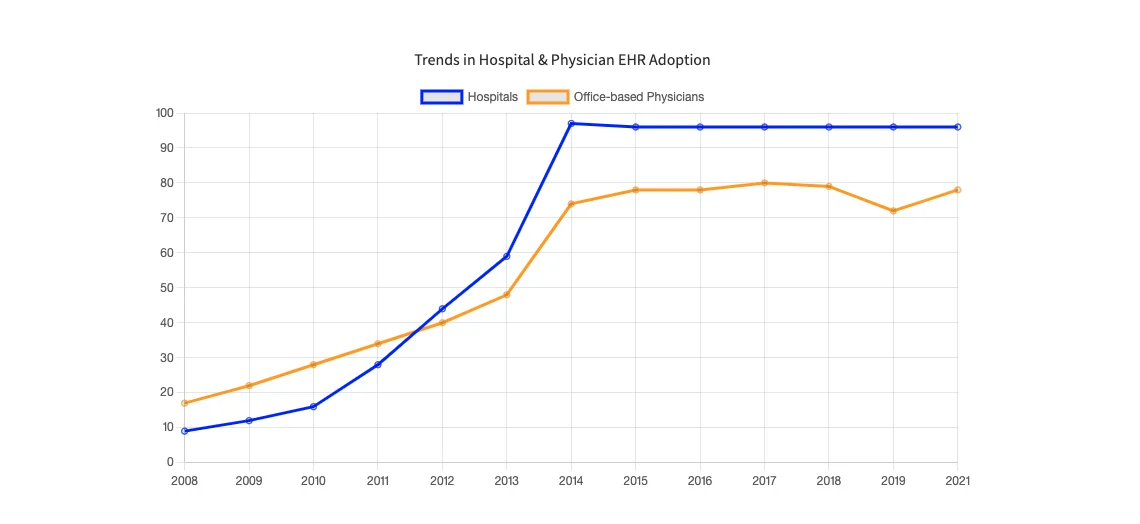
This data is just about one country, but surely global data would be much more satisfying, seeing the digital transformation of the healthcare industry.
That’s the reason why the global market size of the EHR is expected to rise to $33.69 billion by 2030 from the $25.00 billion valuation it achieved in 2022, at a CAGR of 3.30% for the forecast period 2023-2030.
Speaking of the data, wherever it’s staying, the concerns for its security would be there. Therefore, blockchain technology is being explored to enhance the security and integrity of EHRs.
12. Women Wellness Apps Imposing Necessary Care
As per one survey, 50% of global healthcare app users’ customers are women and are likely to utilize healthcare apps more than 75%. Then why not, their specific segment-based app? Seeing that the FemTech market is expected to grow to USD 50 billion by 2025.
Modern women need modern solutions to deal with their healthcare and wellness. The app could include features like a personalized dietary plan, exercise, meditation, tracking of the cycle along with the ovulation period, and many others to follow when they are going through their crucial time, such as the menstruation cycle, pregnancy period, and post-labor period. Hence, developing such women’s wellness apps could make a difference in society.
Popular women’s wellness apps are Clue, Flo, and Natural Cycles, with 500K+ to 100M+ downloads in the Google Play Store and Apple App Store.
13. Gamification In The Healthcare Apps Energizing The Patients’ Excitement
Healthcare apps offering wellness services can be integrated with gamification solutions, which maintain users’ attention and motivate them to spend more time on the app.
Gamification in healthcare apps can be integrated using game psychology in non-gaming content, which motivates patients to log their daily activities. It could provide rewards for logging into the app when adding health logs, etc.
The Healthcare Gamification Market size was evaluated at USD 10 billion in 2022 and is expected to grow at a 10.5% CAGR during the forecast period of 2023-2032.
For designing gamification in the health app, you need to plan it in the following way:
- Plan clear goals for keeping users engaging and continuing their app use
- Visualization for embracing user motivation
- Reward strategy
- Push notifications with marketing copies to motivate users to open the app
Popular healthcare apps with gamification design, including MyFitnessPal, PACT, Mango Health, etc., are getting the attention of users and their dedication toward using the app on a regular basis due to gamification elements.
14. Introduction to Metaverse in Healthcare Apps
Metaverse plays an essential role in healthcare for both: patients and doctors by introducing the Health 4.0 landscape. It leverages the potential of emerging technologies as well as web 3.0 technologies, including AI, AR, VR, and 5G networks, to offer cost-effective medical treatments.
As per the Market Research Future (MRFR) report, the metaverse in healthcare is expected to hit the edge of USD 5,373 Million by 2030 at a CAGR of 48.3%.
Analyzing the compatibility of the metaverse with the healthcare sector, it can be used to boost the performance of the areas, including clinical care, wellness, collaborative working, education, and monetization.
Popular examples of the metaverse in healthcare solutions are Digbi Health, XRHealth, NeuroTrainer, etc., transforming healthcare operations and unlocking bright future opportunities.

15. The Pressing Need For the Cybersecurity
In this technology world, many healthcare organizations are relying on software solutions to store digital data for lifetime accessibility. They use various types of healthcare software including EHR systems, e-prescribing systems, pathology records, radiology information, etc. However, with this ease, organizations also have to maintain integrity and confidentiality along with availability.
As per the analysis circulated by HIPAA Journal, around 20.2 million healthcare records were compromised in the 1H, 2022 period in the US region only.
Hence, healthcare organizations leveraging software systems for storing records have the pressing need for a secured facility – an implementation of the highly encrypted cybersecurity package. And that too, by strictly following the HIPAA regulations to avoid becoming a victim of those cybersecurity incidents and paying fines ranging from $100 to $50,000 or more.
16. Healthcare Supply Chain Management
You must be thinking, how’s the healthcare industry talking about getting digital transformation in the supply chain? Well, there’s! To conduct the diagnosis, professionals do need medical supplies, and that is connected with the supply chain that the healthcare organizations have to take care of.
To manage the healthcare supply chain, they need to opt for hospital management software development that can help them track their medical supplies, reorder them when stock runs low to ensure they never run out, and monitor order progress for better inventory management.
A healthcare supply chain digital transformation focuses on a shift to cross-functional teams, adoption of cloud solutions like ERP, better facility merger and acquisition activities, effective supply chain collaborations, etc.
Through this transformation, they can ensure better patient care during crisis times, like the COVID-19 pandemic, natural disasters, and more.
If you found the trends in healthcare app development interesting, check out our comprehensive Healthcare Software Development Guide! It covers everything from why you should invest in healthcare software to key features, challenges, costs, and more.
To Conclude With
We have been witnessing the progress of the healthcare sector toward the digital landscape and enabling advanced medical treatments for patients while ensuring cost-effectiveness. However, with this advancement, the sector mustn’t forget about being compliant with HIPAA regulation standards for all-time cybersecurity.
The mobile apps following these healthcare app development trends will become smarter, resulting in better business opportunities along with promoting human health and welfare.
When it comes to staying with trends, coping with the intense market competition, enabling better digital healthcare experience, and that too, with innovations, MindInventory is your companion in catering to your ever-evolving healthcare software needs. Send us your requirements today and get enlightened with the best-in-class solution that can boost your healthcare operations.
FAQs On Healthcare App Development
Well, for that, you have to first hire a top-notch healthcare app development and marketing company that can not only help you with app development, maintenance, and support but also optimize its presence in the app store with App Store Optimization (ASO) best practices and further app marketing strategies.
As your healthcare app development is unique, estimating the exact cost is a hard nut to crack. However, for the rough estimation, you could consider some healthcare app development factors, including app design and development team, the country of the IT service providers, innovation intensity to achieve, number of screens of the app to configure, number of features and functionalities to integrate, and much more.
The mHealth app market comprises a wide gamut of applications offering numerous services. So, to lead your healthcare app to success, you must define a clear application for it to cater to your target audience, build an app by following trends, circulate frequent technology and feature updates, ensure all-time availability with cloud enablement and cybersecurity, run amazing marketing campaigns, and much more.
